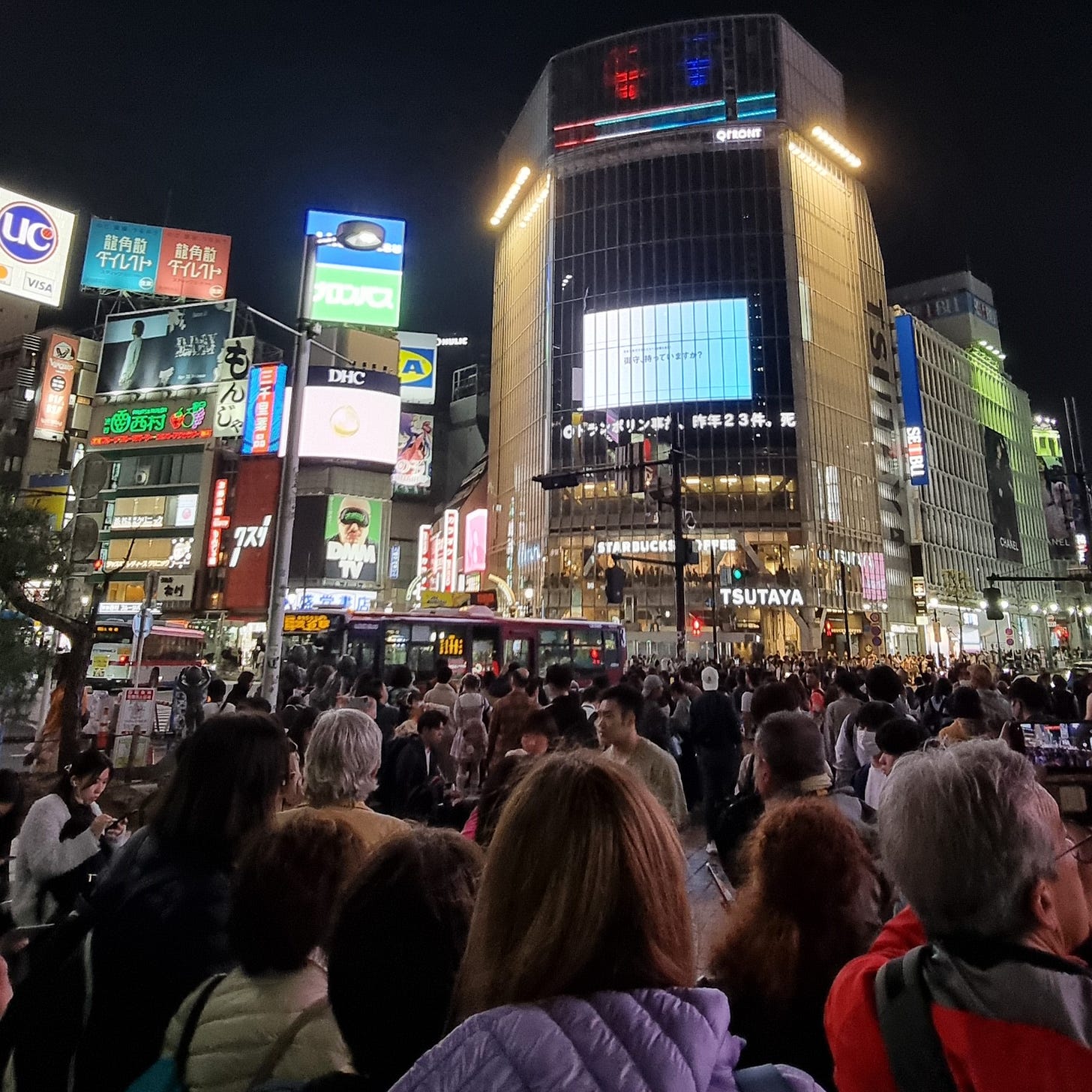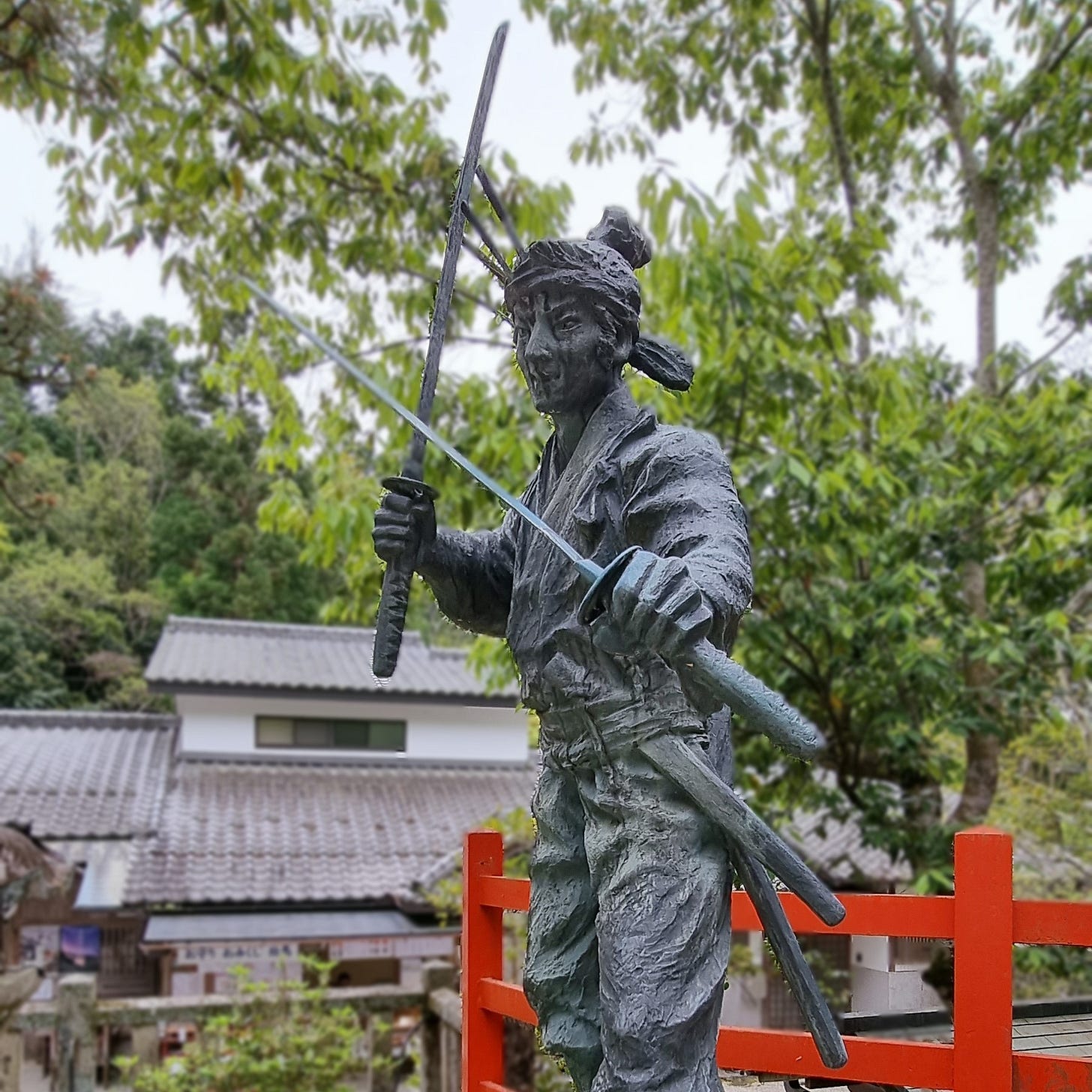Getting around in Japan
Public transports, pedestrians and the power of disincentives
I
I went to Japan this past spring. My first time back on the island in over a decade. I took a week’s time off from work for this vacation. I missed the cherry blossoms by a week, but I did not go there just for that1.
II
In Japan, it was much easier to get around places. You can walk from one district to another or just take the train. The streets are very pedestrian friendly. I can do day trips to Kyoto, Hiroshima and Itsukushima. That’s how convenient transportation is set up in the country.
This is what I find fascinating about Japan. Despite the metropolitan areas in the country being some of the most densest populations in the world, Japan has a pedestrian-first culture. It is so easy to get around, it is very safe to cross the streets, stereotypes about Asian drivers does not apply here. You can see groups of the eldery take trains and buses and walk. The elderly walk a lot. This, I believe, partly why the Japanese have such high life-expectancy, besides food and nutrition. The elderly can be active and get out and about, they have that independence because the system enables it.
The trains are very good too. For example, you could work in central Tokyo but live on the outskirts. Thanks to the bullet train, the Shinkansen, your daily commute could be starting from Kyoto or prefectures further away from the Greater Tokyo area but still make it to work in Tokyo city.
Once you factor in the demographics, it becomes clear how mind-boggling good the transport system is. Japan has a population of over 120 million, the Greater Tokyo Area has a population of close to 40 million. Almost a third of Japan is concentrated in that region. The Tokyo Metro alone has an average daily ridership of 6.84 million. The JR-East railway reports an average daily ridership of 14 million. That’s a mass of people being moved around the city. If the city was car-centric, I dont think anyone can get anywhere nor get anything done in a day.
I do wonder, is it because of the the population’s density that necessitates a highly-functioning public infrastructure OR does the ease of transport lead to such a populated metropolis?
III
My first thought was that this pedestrian-first culture probably stemmed from Japan’s culture of honour and respect. But that’s the easy explanation, and perhaps, biased by some form of Orientalism.
There’s a piece written by Daniel Knowles, where he details about Tokyo’s development into a pedestrian-friendly, almost car-free and high-functioning city.
And what makes Tokyo remarkable is that the city was almost entirely built after the original city was mostly flattened by American bombers in the Second World War. Elsewhere in the world, cities built after the war are almost invariably car-dependent. Think of Houston, Texas, which has grown from 300,000 people in the 1950s to 10 times that now. Or England’s tiny version, Milton Keynes, which is the fastest-growing city in the country. Or almost any developing world city. Since the advent of the automobile, architects and urban planners worldwide have found it almost impossible to resist building cities around roads and an assumption that most people will drive. Tokyo somehow managed not to. It rebuilt in a much more human-centric way.
There’s a paragraph that I find to explain the situation best (emphasis mine):
Yet the much bigger reason for Tokyo’s high quality of life is that Japan does not subsidize car ownership in the way other countries do. In fact, owning a car in Tokyo is rather difficult. For one thing, cars are far more enthusiastically inspected than in America or most of Europe. Cars must be checked by officials every two years to ensure that they are still compliant, and have not been modified. That is true in Britain too, but the cost is higher than what a Ministry of Transport test costs. Even a well-maintained car can cost 100,000 yen to inspect (or around $850). On cars that are older than 10 years, the fees escalate dramatically, which helps to explain why so many Japanese sell their cars relatively quickly, and so many of them end up in East Africa or Southeast Asia. On top of that there is an annual automobile tax of up to 50,000 yen, as well as a 5 percent tax on the purchase. And then gasoline is taxed too, meaning it costs around 160 yen per liter, or about $6 a gallon, less than in much of Europe, but more than Americans accept.
It seems that there is a system of disincentives in place.
IV
Economists and policy-makers talk about creating incentives, to encourage people to act and behave a certain way. For example, tax rebates to enterprises to spur commerce in the economy, performance bonuses to get workers or executives deliver desireable results.
The flipside is that you do not hear about disincentives as often. Disincentives are implemented to discourage certain behaviours or deter certain undesireable outcomes. Such as the ‘sin’ tax on alcohol and cigarretes, or high penalties for committing crimes.
An incentive is also a disincentive (and vice-versa). Economics is all about alternatives and opportunity costs. Incentivising one thing can disincentivise people from another thing. Subsidies for fossil fuels encourages more cars to use petrol, and diverts resources and demand away from promoting green technology instead. Disincentivising the use of cars, such as in Tokyo with prohibitively expensive tolls, taxes and permits, should promote the use of public transportation instead.
However, (dis)incentives might backfire if the alternative provided is of poor quality or no less costly to use. If Tokyo had poor infrastructure, people won’t switch away from cars. But because the costs of using public transport is so far lower. Daniel Knowles again:
When Japan’s railway firms expanded service, they paid for it by building on the land around the stations. In practice, what that means is that they built lots of apartments, department stores, and supermarkets near (and directly above) railway stations, so that people can get straight off the train and get home quickly. That makes the trains more efficient, because people can get where they need to go without having to walk or travel to and from stations especially far.
Frictions and costs to use the railway have been reduced, and they add value back to the users too!
V
My visit to Japan, like in most of my travels, took the road less traveled. I take out a map, and go off the beaten track. Places where it is less likely to find tourists, and sometimes, it’s a well-kept secret even to the locals.
A place to just wander, ponder and immerse myself in a foreign land.
We took a bus from Kyoto Station, and rode 45-minutes out to Ichijoji. We climbed up a hill to the Hachidai Shrine. It was here, according to legend, Miyamoto Musashi made a stop and offered a prayer here before his duel. His prayer of self-reliance2 is recorded in his famous list of 21 precepts, the Dokkōdō: “Respect Buddha and the gods without counting on their help”. Thinking about it put me in a state of solitude and thought.
That’s all I want to do.
Okay, I’ll admit that was a sour grapes moment just missing out on the blossoms. 🫤
“God helps those who help themselves”, found across different cultures and beliefs, can be traced all the way back to the Greeks.





